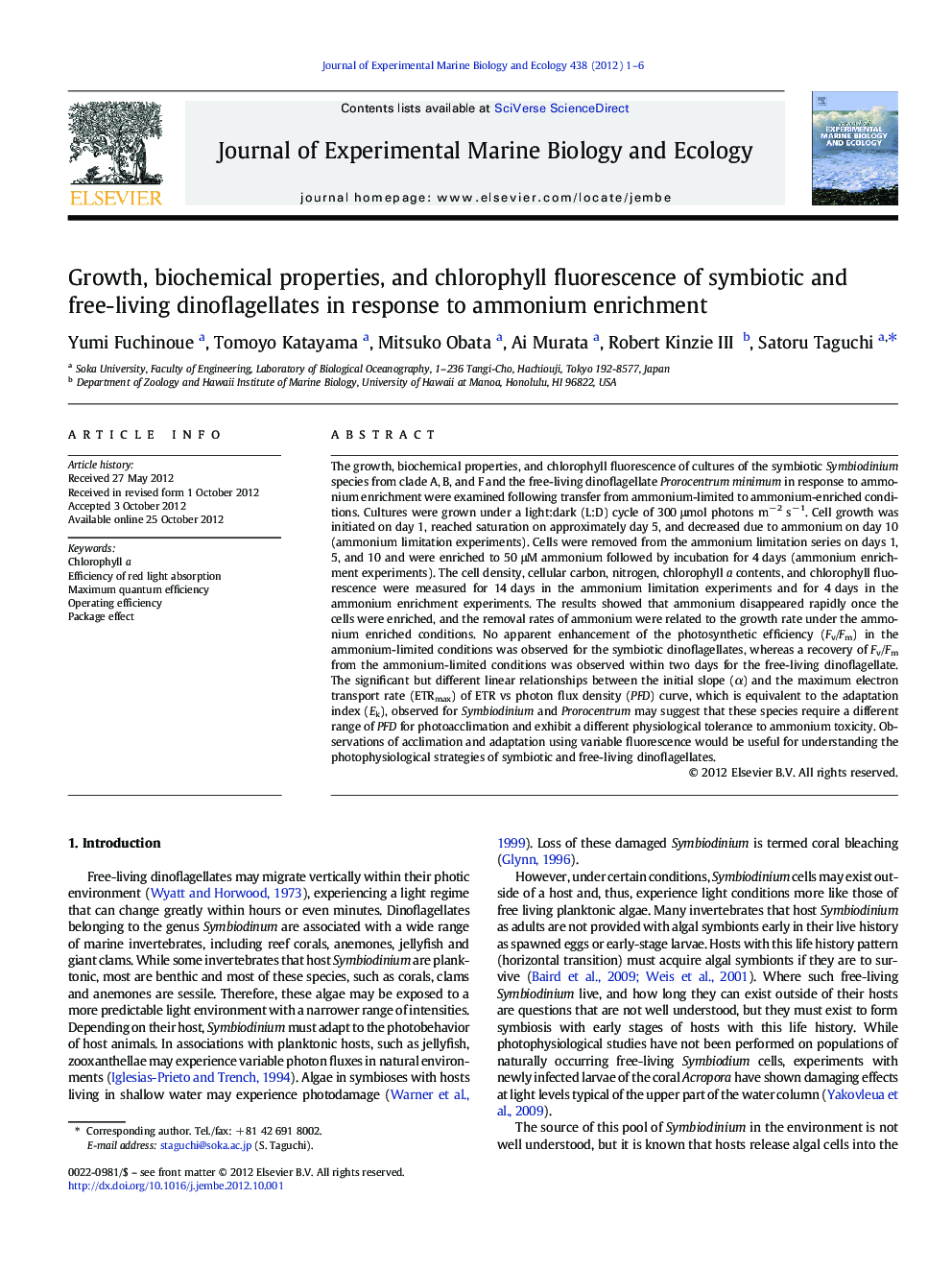| Article ID | Journal | Published Year | Pages | File Type |
|---|---|---|---|---|
| 4395828 | Journal of Experimental Marine Biology and Ecology | 2012 | 6 Pages |
The growth, biochemical properties, and chlorophyll fluorescence of cultures of the symbiotic Symbiodinium species from clade A, B, and F and the free-living dinoflagellate Prorocentrum minimum in response to ammonium enrichment were examined following transfer from ammonium-limited to ammonium-enriched conditions. Cultures were grown under a light:dark (L:D) cycle of 300 μmol photons m− 2 s− 1. Cell growth was initiated on day 1, reached saturation on approximately day 5, and decreased due to ammonium on day 10 (ammonium limitation experiments). Cells were removed from the ammonium limitation series on days 1, 5, and 10 and were enriched to 50 μM ammonium followed by incubation for 4 days (ammonium enrichment experiments). The cell density, cellular carbon, nitrogen, chlorophyll a contents, and chlorophyll fluorescence were measured for 14 days in the ammonium limitation experiments and for 4 days in the ammonium enrichment experiments. The results showed that ammonium disappeared rapidly once the cells were enriched, and the removal rates of ammonium were related to the growth rate under the ammonium enriched conditions. No apparent enhancement of the photosynthetic efficiency (Fv/Fm) in the ammonium-limited conditions was observed for the symbiotic dinoflagellates, whereas a recovery of Fv/Fm from the ammonium-limited conditions was observed within two days for the free-living dinoflagellate. The significant but different linear relationships between the initial slope (α) and the maximum electron transport rate (ETRmax) of ETR vs photon flux density (PFD) curve, which is equivalent to the adaptation index (Ek), observed for Symbiodinium and Prorocentrum may suggest that these species require a different range of PFD for photoacclimation and exhibit a different physiological tolerance to ammonium toxicity. Observations of acclimation and adaptation using variable fluorescence would be useful for understanding the photophysiological strategies of symbiotic and free-living dinoflagellates.
► NH4 enrichment is made on NH4-limited cells. ► Three symbiotic and one free-living dinoflagelates are employed. ► Variable fluoresense is applied to study photophysiology. ► Photophysiological strategies are distinguished between two groups.
